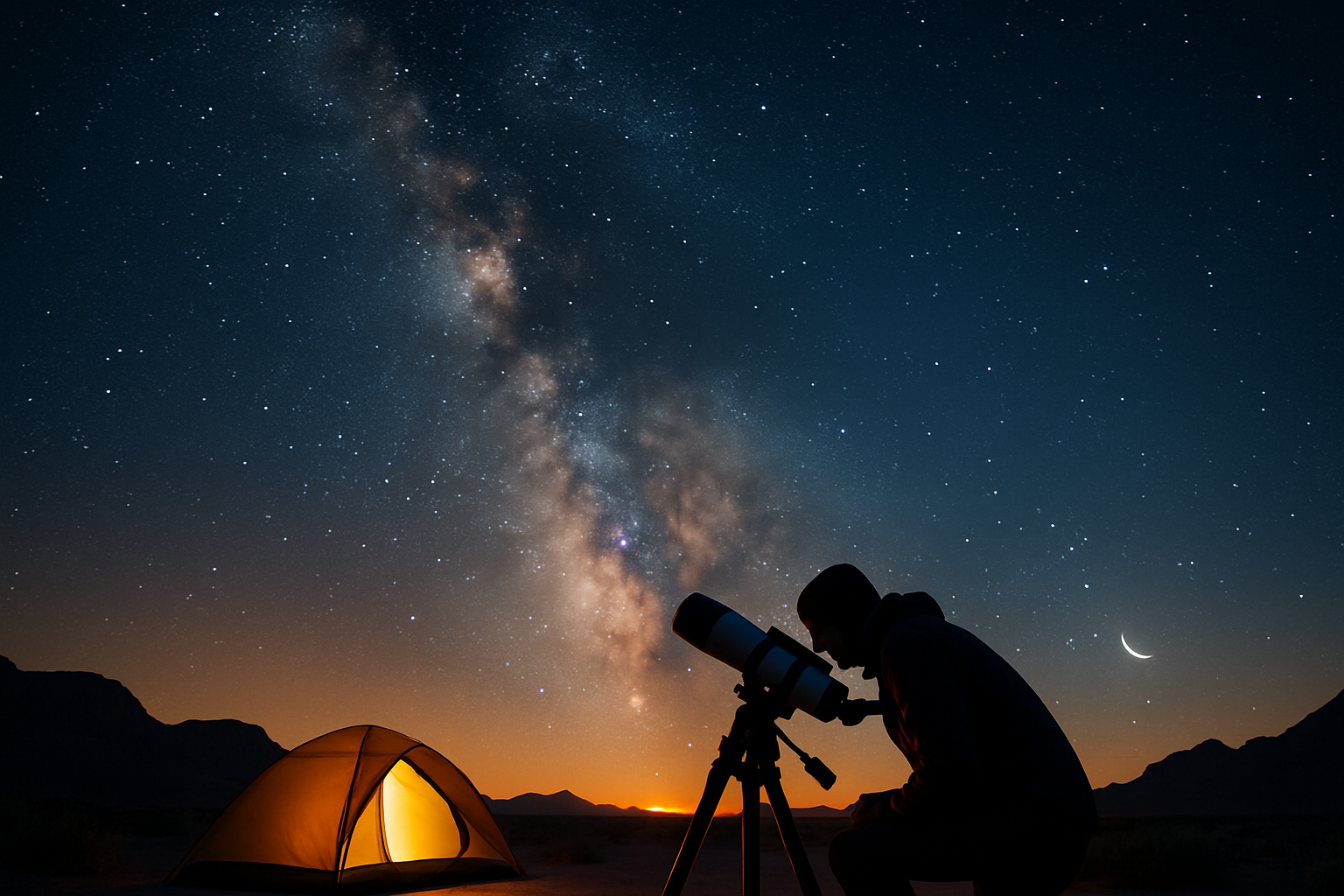Embracing the Joys of Astrotourism: Stargazing Vacations on the Rise
Imagine a holiday where the main attraction is the vast expanse of the night sky, adorned with countless twinkling stars. This is the essence of astrotourism, a growing trend that's captivating travelers seeking unique and awe-inspiring experiences. As light pollution dims the stars in urban areas, more people are venturing to remote locations to reconnect with the cosmos and witness celestial wonders firsthand.

In modern times, the concept of traveling specifically for stargazing began to take shape in the late 20th century. As light pollution increased in urban areas, astronomy enthusiasts sought out darker skies. The International Dark-Sky Association, founded in 1988, began certifying locations as Dark Sky Places, providing a framework for astrotourism destinations.
The Growing Appeal of Stargazing Vacations
The appeal of astrotourism lies in its ability to offer a profound and humbling experience. In an age of constant connectivity and digital overload, gazing at the stars provides a rare opportunity to disconnect and contemplate our place in the universe. This combination of natural wonder and philosophical reflection is drawing an increasingly diverse group of travelers.
Astrotourism also aligns with the growing trend of experiential travel. Travelers are seeking unique, memorable experiences rather than simply ticking off tourist attractions. A night spent under a star-filled sky offers just that - an unforgettable encounter with nature’s grandeur.
Top Astrotourism Destinations
While dark skies can be found in many remote areas, some locations have become renowned for their stargazing opportunities:
-
Atacama Desert, Chile: Known for its exceptionally clear skies and high altitude, the Atacama is home to several world-class observatories.
-
Namibrand Nature Reserve, Namibia: Africa’s first International Dark Sky Reserve offers stunning views of the southern sky.
-
Mauna Kea, Hawaii: Home to some of the world’s most powerful telescopes, Mauna Kea provides unparalleled stargazing opportunities.
-
Teide National Park, Tenerife: This UNESCO World Heritage site offers clear skies and unique volcanic landscapes.
-
Jasper National Park, Canada: The world’s second-largest dark sky preserve showcases the northern lights and the Milky Way.
The Impact on Local Communities
Astrotourism is having a positive impact on many rural and remote communities. Areas that previously had little tourism infrastructure are now developing facilities to accommodate stargazers. This influx of visitors brings economic benefits, creating jobs and supporting local businesses.
Moreover, astrotourism promotes conservation efforts. To maintain their appeal, these destinations must preserve their dark skies, which often involves implementing lighting policies and raising awareness about light pollution. This has broader environmental benefits, as reducing light pollution can positively impact nocturnal wildlife and energy consumption.
Challenges and Considerations
While astrotourism offers many benefits, it also presents challenges. Increased visitor numbers can put pressure on fragile ecosystems and local infrastructure. Sustainable practices are crucial to ensure that these pristine environments remain protected.
Weather unpredictability is another factor to consider. Clear skies are essential for stargazing, and destinations must manage visitor expectations when conditions are less than ideal. Many locations are developing alternative activities and educational programs to engage visitors during cloudy nights.
The Future of Astrotourism
As interest in astrotourism grows, the industry is evolving to meet demand. Luxury accommodations with observatory-grade telescopes are emerging, catering to high-end travelers. Meanwhile, community-led initiatives are making stargazing more accessible to a wider audience.
Technological advancements are also shaping the future of astrotourism. Apps that help identify constellations and planets are enhancing the stargazing experience. Some destinations are exploring augmented reality to provide immersive celestial tours.
Stellar Travel Tips for Aspiring Astrotourists
• Plan your trip around the lunar calendar - a new moon offers the darkest skies
• Bring warm clothing - temperatures can drop significantly at night, even in desert locations
• Allow time for your eyes to adjust to the darkness - it can take up to 30 minutes for full dark adaptation
• Consider joining a guided tour - expert astronomers can greatly enhance your stargazing experience
• Respect local communities and environments - follow Leave No Trace principles to preserve these special places
• Invest in a good red flashlight - it helps preserve your night vision while allowing you to navigate safely
A Universe of Possibilities
Astrotourism represents more than just a travel trend; it’s a gateway to wonder, education, and environmental awareness. As we look to the stars, we gain perspective on our planet and our place in the cosmos. Whether you’re an amateur astronomer or simply someone who appreciates natural beauty, a stargazing vacation offers a unique opportunity to explore the final frontier - right here on Earth. The growing popularity of astrotourism suggests that for many travelers, the journey of discovery extends far beyond our world, into the vast expanse of the universe above.





